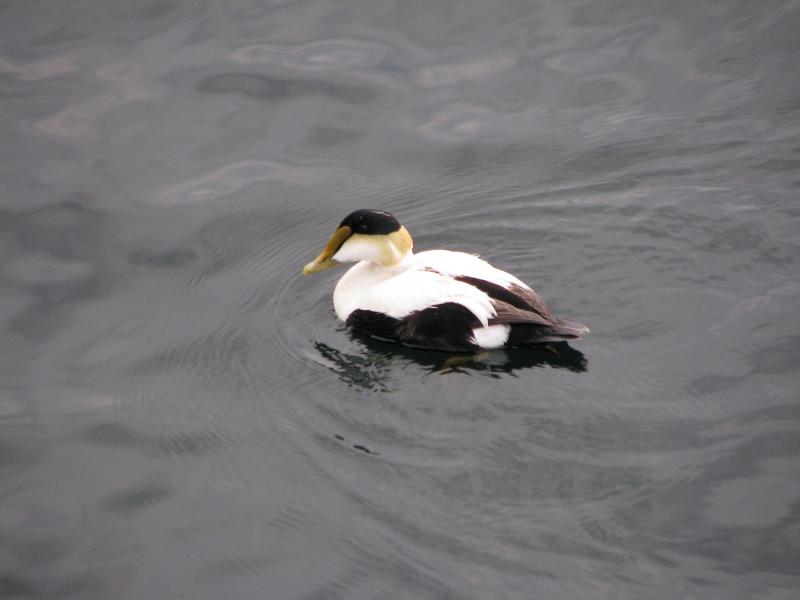We just received in the mail a reprint copy of Maine ornithology classic published in 1908, “Birds of Maine” by Ora Willis Knight. It has been fascinating to peruse through the book and see what was known about Maine birds at that time and to see how things have changed for many species. Take the common eider, for example. Knight wrote in 1908 that “It is very probable that not more than twenty pair of these birds still remain to nest along the entire eastern coast of Maine…” Today, of course, there are thousands that nest along the Maine coast including one of the largest breeding concentrations in the state on Damariscove Island, just off Boothbay. Another duck that is one of the most common today, the mallard, was a rarity back in 1908. Of the wood duck, now a common breeding bird across the state, Knight wrote “It seems only a question of time when the wood duck will have followed the great auk, Labrador duck and others to the land of extinction.”
The comeback of both the eider and the wood duck is probably largely attributable to the work of early ornithologists and Audubon societies in bringing new hunting regulations into effect soon after Knight’s book was published. In fact, it was only eight years after the publication of the book that the historic Migratory Bird Convention was signed in 1916 by the U.S. and Canada. This was a groundbreaking treaty between the two countries that made each nation promise to make it illegal to kill most migratory songbirds and to set regulations on when and how many waterfowl and other hunted birds could be taken. This year marks the 100th anniversary of this important milestone in bird conservation.
Other species that Knight wrote about in 1908 have not fared as well. While the status of Eskimo curlew in Maine was not well known by Knight, it is now a species relegated to the sad list of those that are now extinct. Knight wrote of the passenger pigeon that, in Penobscot County, it had nested in the thousands but even by 1908 he had not seen any for 20 years. We now know that the last passenger pigeon died in the Cincinnati Zoo in 1914.
Species like the bobolink were very common across the state back in Knight’s time as they prospered in the hayfields that were so much more abundant back in those days. Bobolinks, like many birds of open grassland and shrubland, have shown major declines over the last 50 years. Indeed, we are not sure that there are any breeding bobolinks left on the Boothbay peninsula. Thankfully, they still nest in places like the Morris Farm fields in Wiscasset and in various fields farther inland in Lincoln County. Cliff swallows were common summer residents across most of the state in 1908, placing their gourd-like mud nests under the eaves of the many barns and buildings, and we well remember them even 30 years ago as common nesting birds around the Boothbay and Wiscasset area. Today they are found in only a scattered few locations around the state. The rusty blackbird was another species that Knight described in 1908 as a common migrant but that now is hard to find except in scattered small numbers. That species has declined over its entire range by 90 percent or more over the last 50 years.
As we celebrate the 100-year anniversary of the Migratory Bird treaty, we can be thankful that concerned ornithologists like Ora Wills Knight documented the status of birds in his time to help guide conservation efforts both then and now.






























